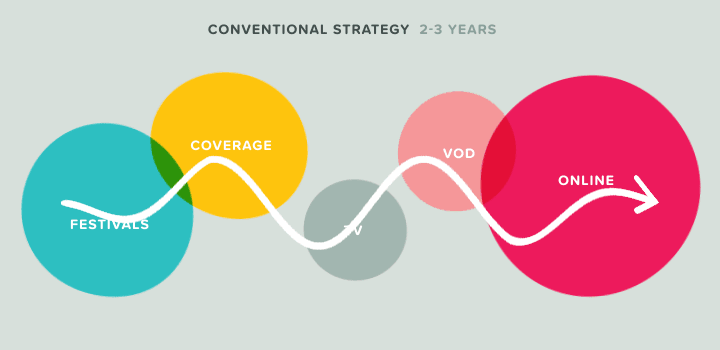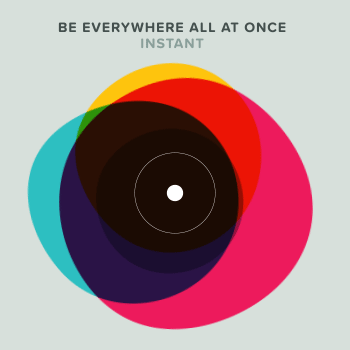You’re proud of your short film! You want to launch it into the world so you create a release strategy. Typically, it looks like this:

Andrew S. Allen, of Short of the Week, thinks it should look like this:

He’s arguing from a partisan position because he’s part of an online festival that can premiere your short, but I think he make a lot of sense.
He even has survey results and statistics to back up his assertions.
In a nutshell, he suggests:
- Create an online + festival strategy. Submit your film to online outlets early.
- Secure your premiere with a top tier festival or online site.
- Find partners — connect with curators to reach their audiences.
- Don’t prioritize money — it’ll likely hurt your exposure.
- Don’t sign away exclusivity — hang on to your right to ‘be everywhere’.
- Go cross platform and get your film everywhere.
- Internationalize your film with subtitles to reach even further.
- Compress your release window over days/weeks rather than months/years.
- Launch, engage and recalibrate during the week of your release.
- Be prepared to pitch your next idea or project.
My take: once upon a time, the mediascape was an orderly grid: on one axis you had ‘windows,’ a hierarchy of platforms (theatrical, pay TV, airlines, free TV, libraries, etc.,) and on the other axis you had ‘territories,’ geographic regions (North America, Europe, Australia and New Zealand, Asia, Africa, etc.) Then along came the Internet that blew away time and space. The ‘Conventional Strategy’ above harkens back to the time of the Old Mediascape. ‘Be Everywhere All at Once’ is firmly rooted in the digital New Mediascape. One great reason to adopt it: you never were making any money from your short, so you might as well get it over with with the BEAAO Strategy and save yourself a couple of years. After all, time is money.




